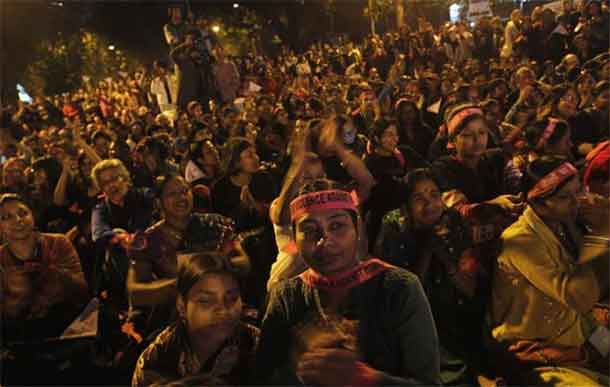

“Not every woman is going to go to a hospital to say: ‘I have just been beaten’ or ‘I have just been assaulted’. Probably the real level is actually higher…”
By Matthew Ponsford
LONDON (Thomson Reuters Foundation) – Women who are assaulted in India are 40 times more likely to die from their injuries than their U.S. counterparts, with social factors mostly to blame for the gaping disparity, according to research released on Thursday.
The researchers at the University Of Washington said they compared survival rates for women post-assault and women who were injured accidentally, and the figures suggested something more sinister was at play.
“We looked and I don’t believe the women (assaulted) in India were worse injured – the clinical injury scores were not that high. That led me to hypothesise about social factors,” Mohini Dasari, a surgeon and researcher at University of Washington, told the Thomson Reuters Foundation.
The research compared more than 25,000 trauma cases and was published in the British Medical Journal’s prestigious BMJ Global Health.
It found that women in the United States had more than five times better odds of surviving a simple fall or road accident than their counterparts in India – largely due to better medical care.
But the gap in survival rates jumped to 40 when it came to intentional attacks, prompting suspicions that neglect and a code of silence around domestic violence in India was to blame.
CODE OF SILENCE
Violence by partners makes up a significant percentage of assaults on women in both countries, said the researchers.
But previous studies that show only one in four Indian women who are assaulted seek health care after an attack led the researchers to ask how social barriers might prevent Indian women reaching hospitals quickly.
“I’m imagining a woman whose significant other has assaulted her, and they’re not necessarily going to let them call for help. We know violence is sometimes condoned by in-laws and the woman might not be able to go and ask for help,” said Dasari.
“There is clearly something that leads to that high odds of death,” she added.
The study analysed patients at four hospitals in Kolkata, Mumbai and Delhi, and compared them to three trauma centres in Pittsburgh, Pennsylvania.
Juan Carlos Puyana, Professor of Surgery at University of Pittsburgh, told the Thomson Reuters Foundation that researchers will struggle to make definite conclusions until the records of trauma better document the causes of injuries.
Even in this study, some assaults may have been mis-registered as falls or road traffic accidents, which could have affected their findings, said Puyana.
“Not every woman is going to go to a hospital to say: ‘I have just been beaten’ or ‘I have just been assaulted’. Probably the real level is actually higher than we’ve seen in these results,” he added.
(Reporting by Matthew Ponsford, Editing by Lyndsay Griffiths.; Credit the Thomson Reuters Foundation, the charitable arm of Thomson Reuters, that covers humanitarian news, women’s rights, trafficking, property rights, climate change and resilience. Visit http://news.trust.org)







